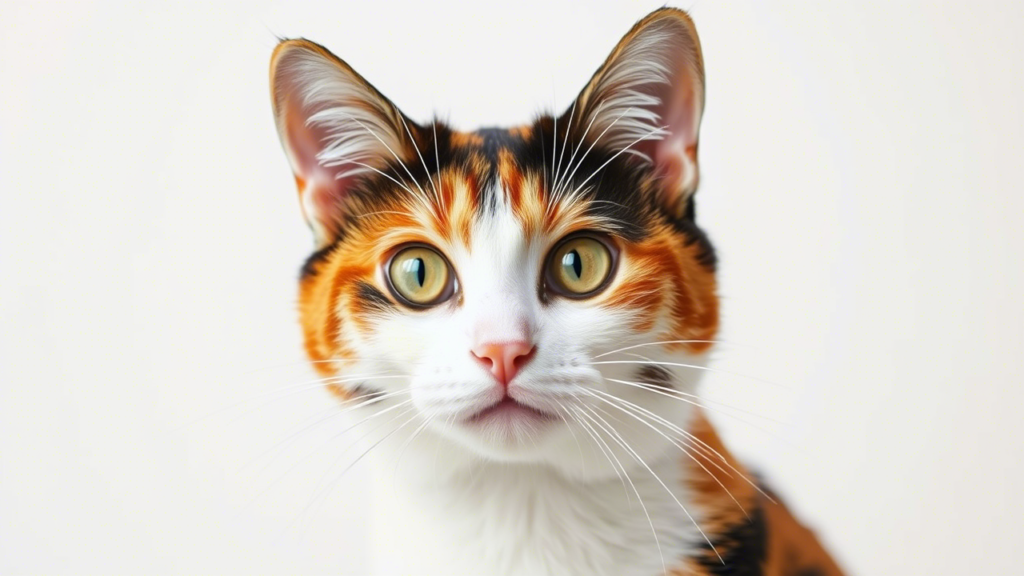Why Most Calico Cats Are Female (And What Happens When They’re Not)
Calico cats are one of the most visually stunning and beloved feline breeds, known for their distinct, multicolored coats that combine patches of white, black, and orange. Their unique appearance has made them a favorite among cat lovers, but there’s a fascinating biological reason why most calico cats are female. In this article, we will explore why this is the case, delve into the genetic factors that influence coat color, and examine what happens when a male calico cat is born. By the end of this read, you’ll have a better understanding of why calico cats are predominantly female and the rare exceptions to this rule.
What Makes a Cat Calico
Before diving into the genetics behind it, let’s first establish what makes a calico cat so special. A “calico” is not a specific breed but rather a color pattern. To be classified as a calico, a cat’s coat must include three distinct colors: white, black (or dark brown), and orange (or a diluted version of it, like gray or cream). This striking combination can appear in different patterns across the cat’s body, often giving them a patchy or mottled look.

The calico pattern is often confused with tortoiseshell, another popular coat pattern that features a mix of black and orange. However, the key difference between a calico and a tortoiseshell cat is the presence of white in calicos, whereas torties do not have any white fur.
The Genetic Puzzle Behind Calico Cats
To understand why most calico cats are female, we need to dive into the world of genetics. The genes responsible for coat color in cats are located on the X chromosomes, of which females have two and males have one. Here’s where things get interesting:
- The orange color in a cat’s coat is controlled by a gene located on the X chromosome. This gene has two versions: one for orange fur (denoted as O) and one for non-orange fur (denoted as o). For a cat to have orange fur, it needs at least one O gene.
- The black color is determined by a separate gene, also on the X chromosome. This gene produces black fur, and in the presence of an O gene (for orange), it will produce the classic orange-and-black patchwork that we associate with calicos.
Now, let’s look at the sex chromosomes. Female cats have two X chromosomes (XX), while male cats have one X and one Y chromosome (XY). Because females have two X chromosomes, they can inherit one orange color gene (O) from one X and one black color gene (o) from the other, resulting in the classic calico pattern of orange, black, and white. This genetic combination is why most calico cats are female.
Why Are Calico Cats Typically Female
The reason that calico cats are predominantly female comes down to the combination of the X chromosomes. For a cat to be calico, it needs to inherit both the orange (O) and black (o) color genes. This is only possible if the cat has two X chromosomes, which, as mentioned earlier, only females have. In simple terms:
- A female cat (XX) can inherit an O gene from one X chromosome and an o gene from the other, resulting in the calico color pattern.
- A male cat (XY), on the other hand, can only inherit one X chromosome, meaning they can only have either an O or an o gene—never both. This prevents male cats from being calico, as they cannot express both the black and orange colors simultaneously.
What Happens When Male Calico Cats Are Born
Although rare, male calico cats do exist. These exceptional cases typically arise due to a genetic anomaly. The most common cause for a male calico is a condition called Klinefelter syndrome. This occurs when a male cat is born with an extra X chromosome, making its genetic makeup XXY rather than the typical XY.
Male cats with Klinefelter syndrome (XXY) have two X chromosomes and one Y chromosome. With this extra X, they inherit both the orange (O) and black (o) color genes, just like female calicos, and as a result, they can be born with the distinctive calico pattern. However, Klinefelter syndrome comes with other complications, such as infertility, and the condition is relatively rare, making male calicos extremely uncommon.
In fact, studies suggest that the likelihood of a male calico cat being born with this condition is about 1 in 3,000 to 1 in 4,000 calico cats. This rarity is part of what makes male calicos so special and intriguing.
The Health of Male Calico Cats
Male calico cats with the XXY genetic makeup may appear healthy, but they often face some challenges. One of the most notable complications is infertility. Because of the extra X chromosome, male calicos generally have reduced or absent sperm production, which means they cannot reproduce. Additionally, the condition can sometimes lead to health issues such as developmental problems, hormone imbalances, and a weakened immune system. Despite these challenges, many male calico cats live full and happy lives.
Are Male Calico Cats More Expensive? Because male calico cats are so rare, they tend to attract more attention and can be sold for higher prices than their female counterparts. However, it’s important to remember that while these cats are intriguing due to their rarity, they are not necessarily healthier or more suitable as pets. If you’re considering adopting a male calico, be sure to take into account any potential health issues and consult a veterinarian for guidance.
Conclusion
The reason most calico cats are female comes down to the genetics of coat color. Female cats have two X chromosomes, which allows them to inherit both orange and black color genes, giving them the iconic calico coat pattern. Male cats, with only one X chromosome, cannot inherit both of these color genes, making male calicos a rare anomaly. When they do occur, male calicos often have a condition known as Klinefelter syndrome, which gives them an extra X chromosome and allows them to express both colors. However, these cats are typically infertile and may face other health challenges.
Ultimately, calico cats—whether male or female—are a beautiful reminder of the fascinating complexities of genetics. Their vibrant coats, coupled with their rare genetic make-up, continue to make them some of the most beloved and admired cats around the world.
FAQs
1. Can a male cat be a calico?
Yes, but it is extremely rare. Male calico cats typically have a genetic condition called Klinefelter syndrome, where they have two X chromosomes and one Y chromosome (XXY).
2. Why are calico cats so expensive?
Female calico cats are not rare, but male calico cats are, which can make them more expensive due to their rarity. However, the cost is not necessarily related to their health or temperament.
3. Do male calico cats have health problems?
Male calico cats with Klinefelter syndrome may experience infertility and health complications, including hormonal imbalances and developmental issues.
4. Are all calico cats female?
No, but the vast majority are. Male calico cats are very rare, occurring in only about 1 in 3,000 to 1 in 4,000 calicos.
